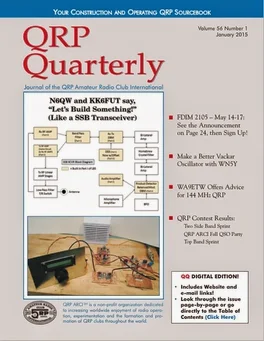SolderSmoke Podcast #171 is available:
http://soldersmoke.com/soldersmoke171.mp3
Bench Report:
Pete's Small Screens (in Color!)
Si5351s
Bill's Graph Paper Frequency Readout
Bill's Broadened Barebones Barbados RX. DIGITIZED!
Another AD9850 DDS using M0XPD Kanga UK Shield
New 13 dollar Color Display (Prettier than Graph paper!)
Pete and Ben's Article in QRP Quarterly Available free here:
http://www.qrparci.org/qqsampl
The DEEP SPIRITUAL REWARDS of DC Receivers
The Importance of Good Power Supplies
SPRAT Article on HW8 Design Error
Latest Edition of Hot Iron
Elecraft KX3 -- Has one of the best receivers in the world
Our book: "SolderSmoke -- Global Adventures in Wireless Electronics" http://soldersmoke.com/book.htm Our coffee mugs, T-Shirts, bumper stickers: http://www.cafepress.com/SolderSmoke Our Book Store: http://astore.amazon.com/contracross-20









































